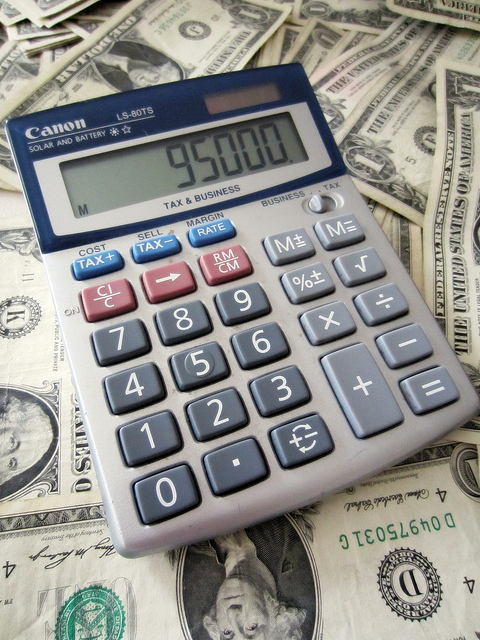
The state budget Democratic lawmakers presented Tuesday relies largely on a newly optimistic revenue projection that assumes California’s economy will return to health with gusto in the coming months.
That’s a big assumption, and if it doesn’t pan out, up to $2.6 billion in spending cuts will be automatically triggered early next year.
But even if the tax revenue grows as much as the Democrats hope or the spending cuts are implemented, the state will almost certainly face a multi-billion shortfall a year from now.
Tuesday’s budget plan, combined with more than $10 billion in spending cuts adopted in March, is expected to permanently erase about $21 billion of a $27 billion budget shortfall the state faced last winter, legislative leaders estimate.
About $9 billion of that $21 billion comes from higher tax revenue – most of it either money already collected this spring that exceeded earlier projections or new estimates of higher revenues in the coming year. About $700 million will come from higher fees on vehicles and on home insurance policies, to pay for fire protection in state wildlands.
About $12 billion of the solution will come from cuts in spending or in projected spending levels.
Democrats voted in March to cut welfare grants, reduce aid to the aged, blind and disabled, and limit benefits for homebound invalids. The plan will also charge the poor and the working poor more money for their health care while cutting payments to doctors and hospitals that provide that care. The budget all but eliminates local redevelopment agencies and cuts projected spending on the University of California and the California State University System.
And if the additional spending cuts are triggered next year, the public schools could be forced to slice a week off the school year and the universities would almost certainly raise tuition and cut classes again.
“We’ve made some very tough cuts in this budget,” Brown said.
But while the budget might be balanced on paper, many of the solutions used to get there will last only one year, so a new shortfall of at least $6 billion is expected to pop up a year from now. If the economy is weaker than expected or state costs grow faster than projected, that shortfall will grow.
That gap is what is known in the Capitol as the state’s “structural deficit” – an ongoing, persistent gulf between the amount the state collects in taxes and the spending that is required by current law.
“We still have our wall of debt out there,” Brown acknowledged Monday. “We still have work to do.”
The Democrats’ first choice for addressing that problem is to put a ballot initiative before the voters next year that would raise taxes to balance the state’s books over the long term.
That approach is similar to Brown’s original plan, which he began pushing in January, to extend about $10 billion in temporary taxes that have already expired or will expire at midnight Thursday with the end of the current fiscal year.
Brown pledged during his campaign last year not to raise taxes without a vote of the people. He later said that even extending those temporary taxes on income, sales and vehicles would need to be put to a vote to live up to his promise.
But he needed a two-thirds vote in the Legislature to call a special election on the taxes. And Democratic and Republican lawmakers could not agree on a plan to do that.
Most, if not all, of the Democrats were on board. A handful of Republicans said they would agree to an election if Democrats would also agree to put a new spending limit on the ballot along with changes to reduce public employee pensions. Democrats would not accede to those demands, and the two sides reached a stalemate.
“This latest budget is based on the hope that $4 billion in new revenues will miraculously materialize, but does absolutely nothing to change government as usual,” said Sen. Bob Dutton, the Senate Republican Leader. “The Democrats have said no to all of the Republican reforms that Californians are demanding, including pension reform, a spending cap and job creation.”
But the Republicans lost any negotiating leverage they had once they said they would not vote to extend the temporary taxes until an election could be held. Democrats feared that, once the taxes expired, voters would be far more reluctant to restore them. Then, their worst-case scenario might arise: the taxes would be defeated but the spending limit and the pension reform might succeed at the polls.
So in the end, the Republicans got nothing except debating points. The Democrats passed a budget without them and will now look to the voters to bring in revenue for the long-term.
“Earlier this year the governor asked both Democrats and Republicans to get out of their comfort zones and do what was best for California,” Senate Leader Darrell Steinberg said. “For Democrats that meant agreeing to billions of dollars of cuts to vital programs….We delivered in March and we’re delivering again in June with billions more in cuts.
“The imperative for revenue is as great as before because there is still a structural deficit. We move on now to November of 2012 and the initiative process to get that part of the job done.”
In other words, there will be no rest for Californians weary of the state’s annual budget dance, with all the partisan posturing, threats of spending cuts and actual cuts, and calls for more taxes that come with it.
It looks as if this will all be with us for at least another year and a half.
Daniel Weintraub is editor of the California Health Report at www.calhealthreport.org.





